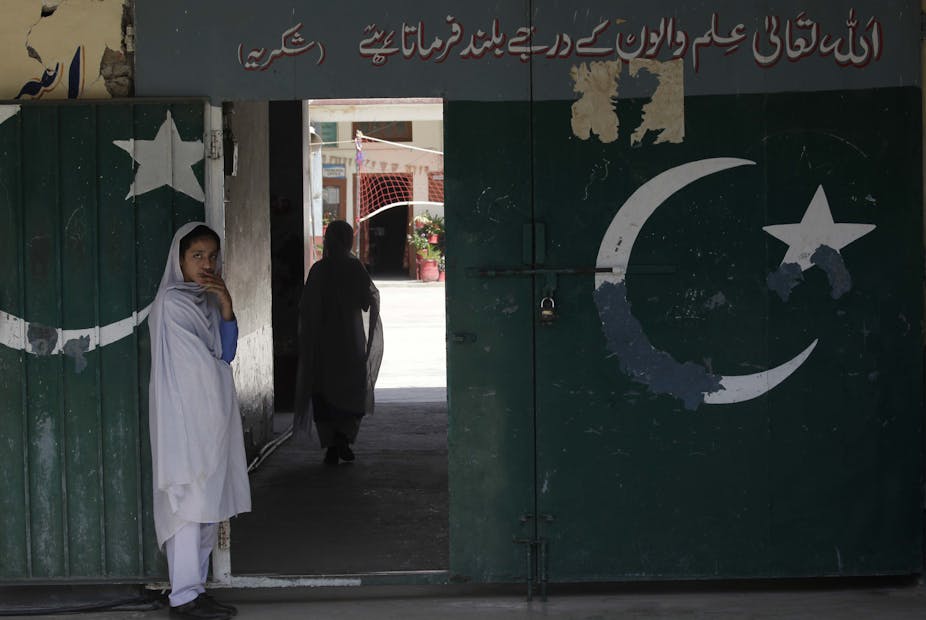For a country seven decades old, Pakistan is dealing with a surprisingly fundamental political and cultural problem: a struggle over what language to use for government.
The Supreme Court has ordered the government to use the constitutionally-mandated national language, Urdu, in place of English in the many contexts where English is currently used. (Ironically, the court’s order was itself written in English.) Prime Minister Nawaz Sharif has declared his enthusiasm for the transition to Urdu, and a committee was constituted to monitor its progress.
But is imposed monolingualism a good fit for South Asia – or does it in fact follow a very Eurocentric idea of how a nation-state should work?
This discussion has been rumbling on and off ever since India and Pakistan achieved independence. Both of their post-colonial constitutions required that after 15 years, English should be officially replaced by Urdu and Hindi respectively, but both countries eventually side-stepped the requirement. Pakistan continued to use English without comment alongside Urdu; India declared it a “subsidiary official language”, symbolically inferior to Hindi but nonetheless still recognised.
Today, the problem comes in how narrowly Urdu and Hindi are defined by the bodies tasked with monitoring and developing the official languages.
Pakistan’s National Language Promotion Department (formerly the National Language Authority) and India’s Department of Official Language both have a reputation for filling their respective languages with clunky neologisms. These are used to avoid common English loanwords; Hindi ones are drawn largely from Sanskrit, and Urdu’s largely from Arabic and Persian.
The people who complain about the language policy aren’t necessarily trying to maintain their English-speaking privilege; there really are genuine questions about the character of the official language. If its speakers commonly use words that aren’t recognised by governmental language bodies, is it right to have a two-track system in which there is a governmental variety of a language and very different one that normal people use?

Taking a hard line against English as a colonial language makes little sense decades after independence, especially when it has become the language of international business and when English loanwords have become embedded in people’s everyday usage in other South Asian languages. And looking back over history, this is a very recent argument anyway.
The scorched-earth cultural politics of imposing a national language never took hold in the subcontinent before modern India and Pakistan came into being. Persian was the apex language during Mughal times and well into the era of British colonial rule, but it never overwhelmed the subcontinent’s longstanding linguistic diversity.
Many modern historians never think to question the colonial line that Persian was “thoroughly debasing and worthless” in India, but this is a fiction; I myself wrote an entire book arguing against the idea that Persian was a foreign imposition that patriotic Indians never really embraced. In reality, people used the languages available to them, making allowances for difference and freely taking words from other languages.
It was recognised, as the old Hindi saying has it, that in South Asia “kos kos par bhasha badle, do kos par pani” or “the language changes every mile, and the taste of the water every two miles”.
Overridden and overwhelmed
In Europe, where national languages are largely a foregone conclusion, we tend to forget how brutal and undemocratic their imposition was.
Languages other than English, notably Irish and Welsh, were repressed across the British Isles in early modern times. The 1536 Welsh Act of Union, for example, excluded Welsh speakers from all government posts.
Across the English Channel, the adoption of standard French involved centuries of violent confrontation with Occitan and Breton speakers. The 1539 Ordinance of Villers-Cotterêts, which replaced Latin with French in legal documents, has often been read as an act of popular liberation from the dead hand of Latin, but from the minority-language perspective it was a disaster; whereas all linguistic communities had previously used the same Latin documents, now only one community was represented.
But while Europe’s worst battles over minority and non-standard languages have been largely swept under the rug in recent centuries, radically multilingual India and Pakistan simply don’t have enough rug to do the same. An unintended consequence of decolonisation has been an almost colonial imposition of artificial, non-colloquial registers of Hindi and Urdu by Indian and Pakistani elites, who are concerned that without a unifying national language their nations will face devastating social and political disintegration.
This is misguided. Instead of repeating some of the unsavoury linguistic nationalism of early modern Europe, these elites should celebrate the wide variation in usage. They should acknowledge the ways Hindi and Urdu mix with languages like English and Punjabi, and make allowances for the complexity of language in society.
Far too little attention is routinely paid to how the citizens themselves might wish to speak. Nothing illustrates this more poignantly than a 1951 speech by the Aga Khan, in which he argued that the only possible national language for the new Islamic Republic of Pakistan could be Arabic. While he addressed the point that Urdu was the mother tongue of a tiny minority of Pakistanis and thus apparently unsuitable as a national language, he did not acknowledge the undeniable fact that Arabic was the mother tongue of precisely 0% of Pakistanis.
And of course, he gave the speech in English.

